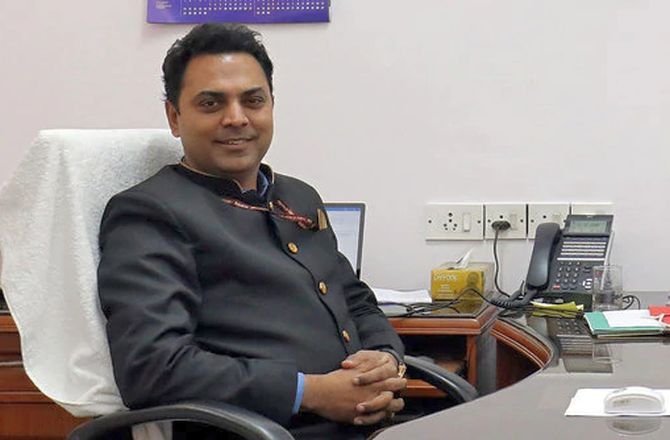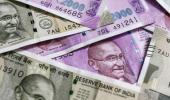‘Given the 50 per cent or thereabouts increase in borrowing that has been announced, it is a reasonable estimate to say that at this time, an increase of 1.7-1.8 per cent on the 3.5 per cent budgeted fiscal deficit target is being anticipated,’ Chief Economic Adviser Krishnamurthy Subramanian said on Friday.

Chief Economic Advisor Krishnamurthy Subramanian told Business Standard on Friday that as things stand, the centre’s fiscal deficit for 2020-21 could be 1.7-1.8 percentage points higher than the 3.5 per cent of gross domestic product targeted in the budget. He also said that the April-June quarter will witness a substantial contraction in GDP.
Such an increase would take the fiscal deficit for the year to 5.2-5.3 per cent of GDP, provided that the underlying assumption of 10 per cent nominal GDP growth stays constant.
“Given the 50 per cent or thereabouts increase in borrowing that has been announced, it is a reasonable estimate to say that at this time, an increase of 1.7-1.8 per cent on the 3.5 per cent budgeted fiscal deficit target is being anticipated,” Subramanian said in an interaction with this paper.
He added that like most other projections, this was also subject to frequent revisions given the uncertainty surrounding the Covid-19 pandemic, the nationwide lockdown and their impact on the economy and the centre’s finances.
The Centre has decided to borrow Rs 4.2 trillion more than budgeted for FY21, taking its total gross borrowing to Rs 12 trillion. The states have also been given an additional borrowing room of Rs 4.3 trillion by being allowed to borrow upto 5 per cent of their GSDP from the earlier 3 per cent.
Borrowing is used to fund the gap between between expenditure and revenues. With centre and states desperately short of revenues and their expenditure commitments increasing due to the pandemic, experts including former CEA Arvind Subramanian expect the general government’s (centre plus states) fiscal deficit to go into double digits as a percentage of GDP, compared to the 6 per cent which the Fiscal Responsibility and Budget Management framework mandates.
For FY2019-20, the fiscal deficit came in at 4.6 per cent of GDP, compared with the revised estimate of 3.8 per cent and the budget estimates of 3.3 per cent. It had breached the 0.5 per cent escape clause which the FRBM Act allows.
When asked what his current forecasts for economic growth in April-June quarter and 2020-21 were, current CEA Subramanian said: “In first quarter there will definitely be a contraction. There is no doubt about it. There will be quite a perceptible contraction.”
“My worry is that often times the nuance with which I give numbers, that gets lost, and it is only the baseline that is clung on to. So I am very reluctant to give specific numbers and I would rather emphasise the uncertainty that surrounds the pandemic,” he said.
“In the early weeks of the lockdown, we had estimated GDP growth for the year to be between 1.5-2 per cent. I think now there are downside risks to that. How deep the risks are depend upon whether or not we see a recovery in the latter half of the year,” Subramanian said.
For FY21, a number of analysts, economists, ratings agencies and banks have forecast a GDP contraction, with some, like State Bank of India’s Soumya Kanti Ghosh forecasting that the economy could contract by as much as 6.8 per cent.
The Reserve Bank of India Governor Shaktikanta Das said late last month that the economy is expected to contract in FY21, but he did not give any numbers.
The national income data released last Friday showed that real GDP grew at 3.1 per cent for January-March quarter – a low not seen in more than 17 years – and an 11-year low of 4.2 per cent in 2019-20.
Speaking on those numbers, Subramanian said that while the lockdown was only seven-days in March, high frequency data indicated that the fear of the coronavirus had started impacting economic activity from February itself.










